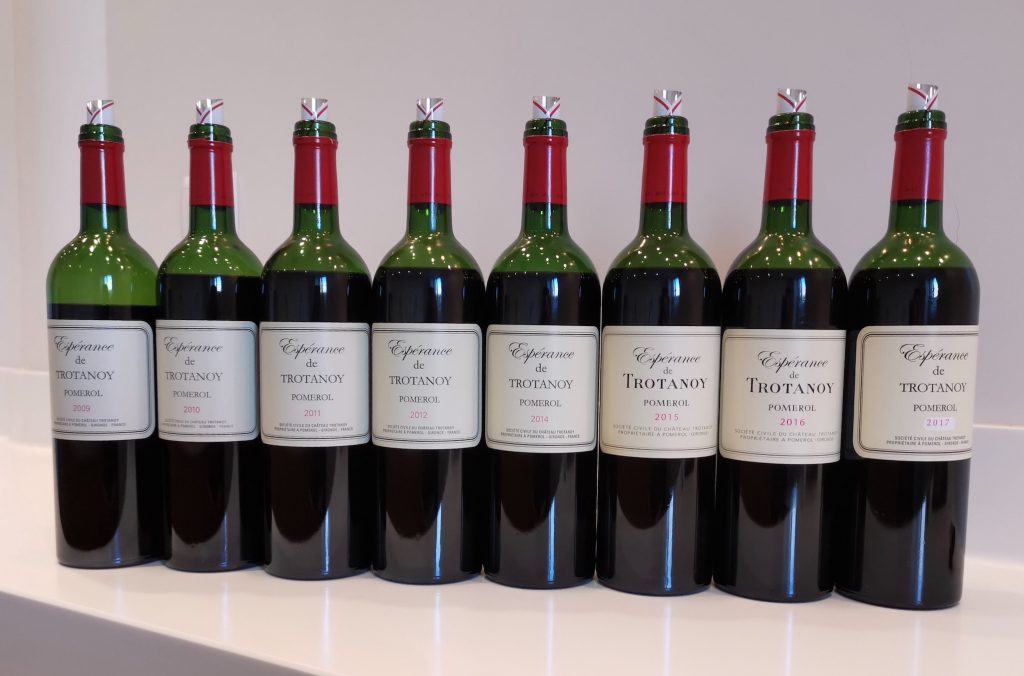
Christian Moueix is proprietor of Chateau Trotanoy, La Fleur Petrus, Chateau Belair-Monange, and the wine merchant Etablissements Jean-Pierre Moueix.
Vines are known to have been planted at Trotanoy since at least 1761. Apparently, Trotanoy the name derives from the French trop ennui, a term loosely translated to mean ‘too much to bother with’. This refers to the poor soil which made agriculture and viticulture very difficult.
In the early 19th century, a family by the name of Giraud were owners of the Pomerol vineyard. As wealthy landowners, the estate carried their name and was referred to as Giraud Cru de Trotanoy. Although the Right Bank was not then as renowned as the Medoc, Trotanoy was considered as one of the top wines of Pomerol.
The direct descendants of the Giraud family relinquished ownership of the estate at the end of World War II (1939-45) and sold it to the Pecresse Family. This was only a blip in the history of the wine because barely 10 years later, in 1953, the family sold Chateau Trotanoy to Jean-Pierre Moueix (20 August 1913 – 11 April 2003). If ever there was a person, more than any other, who raised the profile and spread the fame of Pomerol, it was this larger-than-life personage.
In 1937, at just 24 years young, Jean-Pierre Moueix founded the eponymous negociant house Etablissements Jean-Pierre Moueix in Libourne. At that time, very few of the great wine estates of St-Emilion and Pomerol were known outside the immediacy of the Right Bank. All that changed when Moueix started buying up wine estates and, just as importantly, travelling the world himself and promoting them.

Trotanoy’s 7.6-hectare vineyard is planted to 90% merlot and 10% cabernet franc and situated not far from Petrus, Chateau Lafleur and La Fleur-Petrus.
So it was that in 1953 Jean-Pierre Moueix bought Chateau Trotanoy (and La Fleur Petrus), followed by Chateau Magdelaine in St-Emilion in 1954. Chateau Petrus was added to this galaxy of red gems in the 1960s.
Chateau Trotanoy’s 7.6-hectare vineyard is planted to 90% merlot and 10% cabernet franc. The soils include clay, gravel and iron deposits. The vines are not far from those of Petrus, Chateau Lafleur and La Fleur-Petrus. Vinification takes place in temperature-controlled concrete vats. The wine is then aged – depending on the quality and personality of the vintage – in 40 to 50% new oak barrels for 18 to 20 months.
My first experience of how great a Pomerol can be was about 25 years ago. I had bought a case of the wine from a Sotheby’s auction. In those days, prices were still reasonable. Today, I would not be able to afford it.
Chateau Trotanoy 1976 is a sensuous red. Every sip I took, I tasted sunshine and fully-ripened fruit so unctuous I had to pause to stop myself from being completely overwhelmed. Trotanoy ’76 – I can still remember it now – was velvet disguised as a red wine.
The Pomerol is the pride and joy of Christian Moueix, the younger son of Jean-Pierre Moueix who took over the negociant company his father founded in 1937. Apart from Trotanoy and Etablissements Jean-Pierre Moueix, Christian Moueix also inherited La Fleur Petrus, Chateau Magdelaine and later acquired Chateau Belair in 2008 which he merged with Magdelaine to become Chateau Belair-Monange. “Monange” is the maiden name of his grandmother Anne-Adele Moueix.
I remember, about twenty years ago, Christian Moueix telling me that Trotanoy is the only Pomerol he sometimes mistakes – in a blind tasting – for Petrus, the vineyard owned by his elder brother Jean-Francois Moueix.
Apart from the wine company Etablissements Jean-Pierre Moueix and wine properties, Christian Moueix also inherited his father’s good looks, love for painting, taste for classic great wine, charm and Old-World discretion. Great genes are like great terroir.
TOMORROW • WEDNESDAY 25 MARCH 2020
Vertical of Esperance de Trotanoy, second wine of Trotanoy



